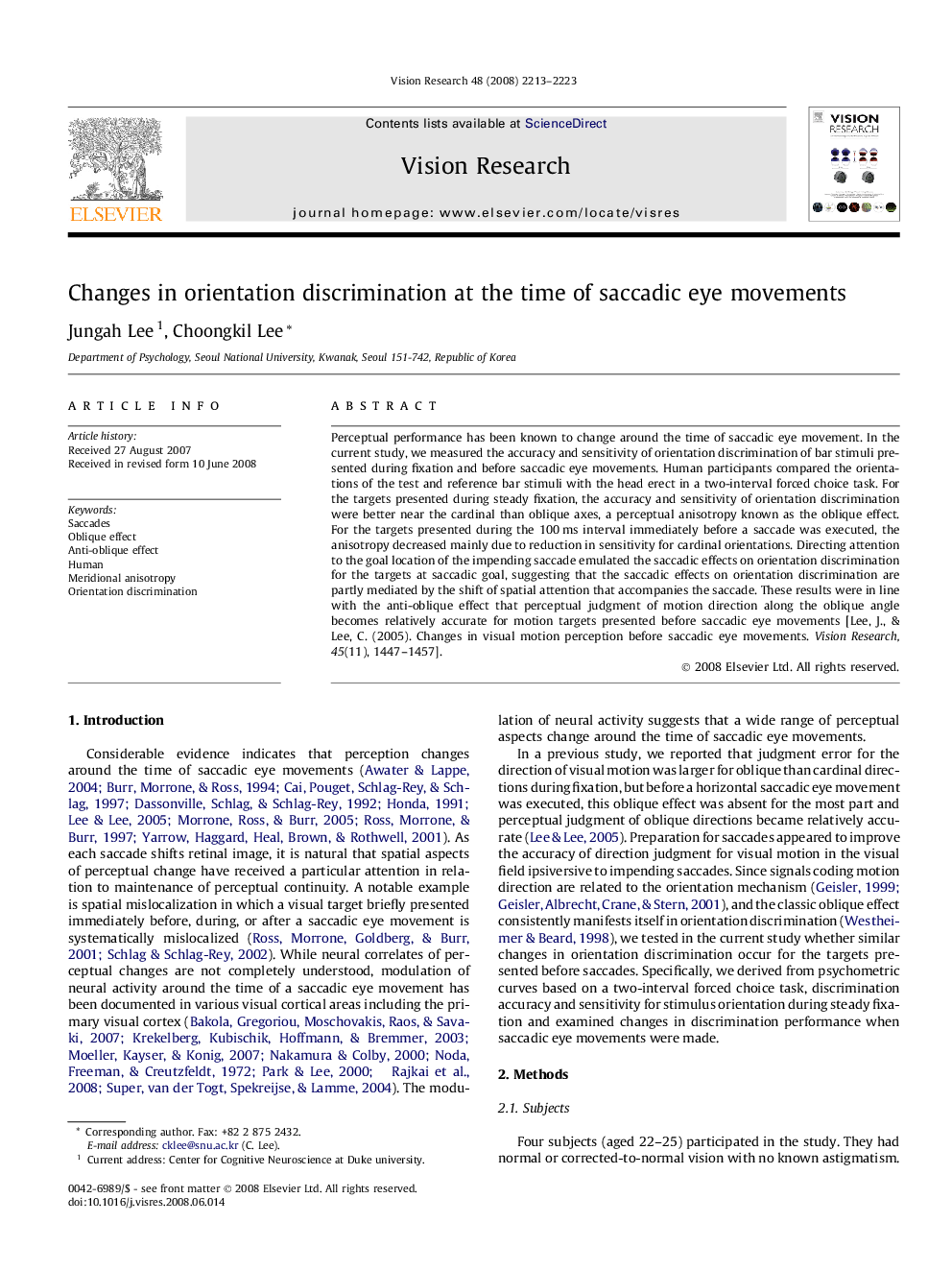| Article ID | Journal | Published Year | Pages | File Type |
|---|---|---|---|---|
| 4035555 | Vision Research | 2008 | 11 Pages |
Perceptual performance has been known to change around the time of saccadic eye movement. In the current study, we measured the accuracy and sensitivity of orientation discrimination of bar stimuli presented during fixation and before saccadic eye movements. Human participants compared the orientations of the test and reference bar stimuli with the head erect in a two-interval forced choice task. For the targets presented during steady fixation, the accuracy and sensitivity of orientation discrimination were better near the cardinal than oblique axes, a perceptual anisotropy known as the oblique effect. For the targets presented during the 100 ms interval immediately before a saccade was executed, the anisotropy decreased mainly due to reduction in sensitivity for cardinal orientations. Directing attention to the goal location of the impending saccade emulated the saccadic effects on orientation discrimination for the targets at saccadic goal, suggesting that the saccadic effects on orientation discrimination are partly mediated by the shift of spatial attention that accompanies the saccade. These results were in line with the anti-oblique effect that perceptual judgment of motion direction along the oblique angle becomes relatively accurate for motion targets presented before saccadic eye movements [Lee, J., & Lee, C. (2005). Changes in visual motion perception before saccadic eye movements. Vision Research, 45(11), 1447–1457].
